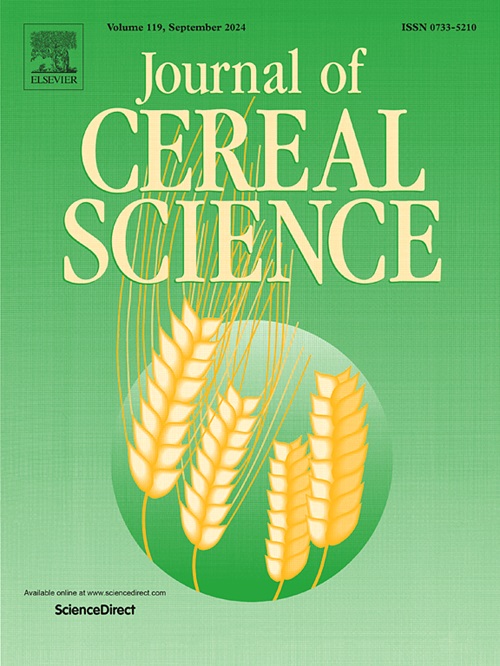Effects of starch gelatinization, rheological properties, and a top cover on the height of steamed cakes made with rice flour and wheat flour
IF 3.7
2区 农林科学
Q2 FOOD SCIENCE & TECHNOLOGY
引用次数: 0
Abstract
The expansion and shrinkage behaviors of steamed rice flour and wheat flour cakes were investigated. The maximum height of rice flour batter-cake (sample during steaming) was much lower than that of wheat flour batter-cake. The gelatinization temperature (Tgel) was determined to be 83.8 °C for the rice flour batter and 81.5 °C for the wheat flour batter. The storage modulus (G’) and loss modulus (G”) at 75 °C (below the Tgel) and 80 °C (just below the Tgel) were much higher in the rice flour batter than in the wheat flour batter. This suggests that rice flour batter is more resistant to expansion (harder batter) than wheat flour batter. The shrinkage rate of steamed rice flour cake was much higher than that of steamed wheat flour cake. The G’ and G” values of rice flour batter were slightly lower than those of wheat flour batter at 85 °C (above the Tgel). In addition, the height of gelatinized layer at the maximum height of rice flour batter-cake was much lower than that of wheat flour batter-cake. The lower gelatinized layer, the softer layer, and thus the larger shrinkage will occur. To improve the less expansion and greater shrinkage of steamed rice flour cake, a novel steaming method in which the top surface of the batter is covered by a light and sturdy top cover was proposed. It was demonstrated that the height was significantly higher in cake steamed with a top cover than in that steamed without a top cover.
淀粉糊化、流变性和封盖对米粉和小麦粉蒸糕高度的影响
研究了蒸米粉和小麦粉饼的胀缩特性。米粉糊饼(蒸样)的最大高度远低于小麦粉糊饼。测定了米粉面糊的糊化温度(Tgel)为83.8℃,小麦粉面糊的糊化温度为81.5℃。在75°C(低于Tgel)和80°C(略低于Tgel)时,米粉面糊的储存模量(G′)和损失模量(G”)远高于小麦粉面糊。这说明米粉面糊比小麦粉面糊更耐膨胀(更硬)。蒸米粉饼的收缩率远高于蒸小麦粉饼。在85°C (Tgel以上)时,米粉面糊的G′和G”值略低于小麦粉面糊。此外,米粉糊饼最大高度处的糊化层高度远低于小麦粉糊饼。糊化层越低,层越软,因此会发生较大的收缩。为改善蒸制年糕膨化小而收缩大的特点,提出了一种在面糊上表面覆盖轻薄坚固的顶盖的蒸制方法。结果表明,有顶盖蒸制的蛋糕高度明显高于无顶盖蒸制的蛋糕高度。
本文章由计算机程序翻译,如有差异,请以英文原文为准。
求助全文
约1分钟内获得全文
求助全文
来源期刊

Journal of Cereal Science
工程技术-食品科技
CiteScore
7.80
自引率
2.60%
发文量
163
审稿时长
38 days
期刊介绍:
The Journal of Cereal Science was established in 1983 to provide an International forum for the publication of original research papers of high standing covering all aspects of cereal science related to the functional and nutritional quality of cereal grains (true cereals - members of the Poaceae family and starchy pseudocereals - members of the Amaranthaceae, Chenopodiaceae and Polygonaceae families) and their products, in relation to the cereals used. The journal also publishes concise and critical review articles appraising the status and future directions of specific areas of cereal science and short communications that present news of important advances in research. The journal aims at topicality and at providing comprehensive coverage of progress in the field.
 求助内容:
求助内容: 应助结果提醒方式:
应助结果提醒方式:


